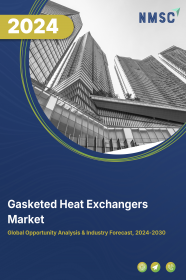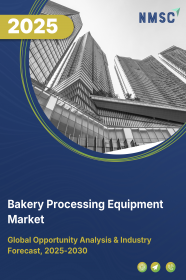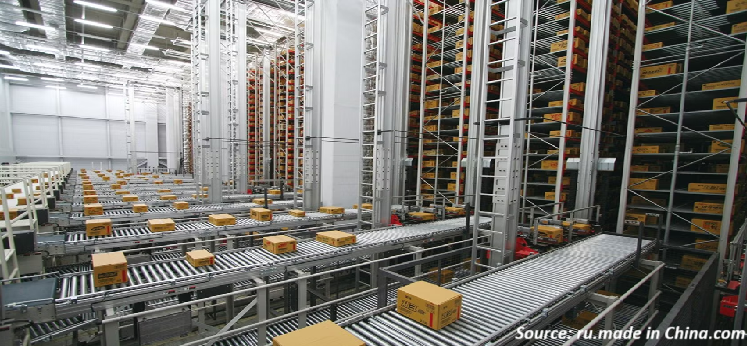
Gasketed Heat Exchangers Market by Material (Stainless Steel, Carbon Steel, Titanium, Nickel Alloy, and Others), and by End Users (Food & Beverage, Chemicals, Semiconductor & Electronics, Oil & Gas, Energy & Power, and Others)– Global Opportunity Analysis and Industry Forecast 2024-2030.
US Tariff Impact on Gasketed Heat Exchangers Market
Trump Tariffs Are Reshaping Global Business
Gasketed Heat Exchangers Market Overview
The global Gasketed Heat Exchangers Market size was valued at USD 2.12 billion in 2023 and is predicted to reach USD 3.40 billion by 2030 with a CAGR of 6.4% from 2024-2030.
The gasketed heat exchangers market, also known as the gasketed plate heat exchangers (GPHEs) market that focuses on the production and distribution of equipment intended for optimal heat transfer between two fluids. This type of exchanger consists of multiple thin plates, sealed with gaskets, allowing one fluid to flow through the channels formed between the plates while the other fluid circulates on the opposite side.
This design enhances the surface area for heat exchange, making it highly effective in transferring thermal energy. These heat exchangers are utilized for various processes including cooling, heating, and pasteurization, providing benefits such as compact design, high thermal efficiency, and ease of cleaning and maintenance. Moreover, gasket materials play a critical role in optimizing thermal processes across various industries by delivering efficient heat transfer solutions that enhance energy savings and operational effectiveness.
Market Dynamics and Trends
The expanding automotive sector propels the gasketed heat exchangers market growth due to the rising demand for efficient thermal management systems in vehicles. The focus on improving fuel efficiency and reducing emissions among automakers leads to the adoption of gasketed plate heat exchangers that offer efficient engine and transmission cooling solutions.
As per the latest report published by the European Automobile Manufacturers Association (ACEA), the global car production reached 76 million in 2023, marking a 10.2% growth compared to 2022. This growth emphasizes the increasing need for advanced heat management solutions in the evolving automotive sector that in turn accelerates market growth.
Additionally, the growth of the gasketed heat exchangers market is driven by rising energy consumption, as industries seek efficient heat transfer solutions to enhance energy optimization. This necessity makes reliable heat exchangers crucial for effective thermal management in energy-intensive applications.
According to the report of the Energy Institute published in 2024, the global energy consumption increased from 160,629 TWh in 2013 to 183,230 TWh in 2023, reflecting a significant rise of 14.06%. This trend highlights the essential requirement for advanced heat exchanger solutions to address the growing demands associated with energy consumption.
Moreover, the rising oil and gas industry fuels the gasketed heat exchangers market expansion due to increasing demand for efficient heat transfer solutions in refining, processing, and petrochemical applications. These systems enhance provide effective and reliable heat management for essential operations within the sector.
As per the report published in 2024 by the Energy Institute, the global oil production increased from 51,520 TWh in 2022 to 52,432 TWh in 2023, reflecting a 1.77% growth. This steady increase highlights the growing demand for advanced heat transfer solutions to meet the expanding needs of the oil and gas industry.
However, the high initial investment costs for gasketed heat exchangers limit their market adoption. The substantial capital required for procurement and installation creates budget constraints especially for small scale industries, hindering their widespread implementation in various applications.
On the contrary, the integration of IoT capabilities in gasketed heat exchangers is expected to facilitate real-time monitoring and data analysis, enabling predictive maintenance and optimizing operational efficiency. This technological advancement reduces downtime and maintenance costs along with enhancing system performance, thereby creating ample growth opportunities in the market as industries increasingly seek smart and connected solutions.
Market Segmentation and Scope of the Study
The gasketed heat exchangers market report is segmented on the basis of material, end users, and region. On the basis of material, the market is divided into stainless steel, carbon steel, titanium, nickel alloy, and others. On the basis of end users, the market is segmented into food & beverage, chemicals, semiconductor & electronics, oil & gas, energy & power, and others.
Regional breakdown and analysis of each of the aforesaid segments include regions comprising North America, Europe, Asia-Pacific, and RoW.
Geographical Analysis
Asia-Pacific dominates the gasketed heat exchangers market share and is expected to continue its dominance during the forecast period driven by the expanding chemical industry in countries such as Japan, China, and India. The rising demand for efficient heat exchange solutions fuels the need for reliable thermal management systems to enhance production efficiency.
As per the report by the India Brand Equity Foundation published in 2024, India’s chemical sector valued at approximately USD 220 billion in 2022 and is expected to expand USD 300 billion by 2025 within a span of 3 years. This robust growth in the chemical sector strengthens the necessity for innovative heat exchange solutions, positioning them as critical components in optimizing processes and improving energy efficiency across the region.
Additionally, the automotive industry in this region drives the market growth as advanced vehicles require efficient thermal management, particularly for electric and hybrid powertrains. The transition to electric vehicles (EVs) increases the demand for heat exchange solutions to regulate battery temperature, ensuring optimal performance.
According to the latest report published by the International Energy Agency (IEA), EV sales in China accounted for 8.1 million units in 2023 compared to 6 million units in 2022, reflecting a 35% growth. This surge in EV sales highlights the growing need for advanced thermal management solutions essential for enhancing battery performance and energy efficiency in the automotive sector.
On the other hand, North America is expected to show a steady rise in the gasketed heat exchangers market demand due to the significant growth of the energy consumption across diverse industrial sectors. This emphasis on improving operational efficiency within these industries drives an increasing demand for advanced heat exchange solutions.
According to the report of the U.S. Energy Information Administration published in 2023, the energy consumption in the U.S. in 2023 stood at 26,189 TWh, compared to 25,729 TWh in 2013, marking a growth of 1.79% within a time span of 10 years. The rise in energy consumption propels the adoption of innovative heat exchangers in meeting increasing energy demands and improving efficiency that in turn drives market growth.
Furthermore, the expanding oil and gas sector in countries such as the U.S and Canada fuels the growth of the market due to the rising need for efficient heat transfer solutions in extraction, refining, and processing operations. As per the latest report published by the Our World in Data, Canada’s oil production increased from 3,186 TWh in 2022 to 3,231 TWh in 2023, marking a rise of 1.4%. This upward shift shows the growing demand for efficient heat exchange solutions that are essential for improving productivity in oil and gas operations.
Competitive Landscape
The gasketed heat exchangers industry comprises of various key players such as are Alfa Laval AB, API Heat Transfer ThermaSys Corporation, Kelvion Holding GmbH, HRS Heat Exchangers Limited, Xylem Inc., Danfoss A/S, Valutech, Inc., AIC S.A., MultiTherm LLC, and others. These market players are adopting various strategies including product launches to stay competitive and maintain their market positions.
For instance, in May 2023, Xylem launched new line of gasketed plate and frame heat exchangers, designed to optimize thermal performance and energy efficiency in various applications. These heat exchangers feature a robust design that allows for easy maintenance and adaptability across different industries.
Furthermore, in March 2023, Alfa Laval launched the new T21 gasketed plate-and-frame heat exchanger (GPHE), aimed at improving energy efficiency in multiple industries. This model replaces the widely used T20 and includes a frame designed to handle pressures of up to 40 bar (600 psi), making it more compact and easier to install and maintain.
Key Benefits
-
The report provides quantitative analysis and estimations of the gasketed heat exchangers industry from 2024 to 2030, which assists in identifying the prevailing market opportunities.
-
The study comprises a deep dive analysis of the current and future gasketed heat exchangers market trends to depict prevalent investment pockets in the market.
-
Information related to key drivers, restraints, and opportunities and their impact on the market is provided in the report.
-
Competitive analysis of the players, along with their market share is provided in the report.
-
SWOT analysis and Porters Five Forces model is elaborated in the study.
-
Value chain analysis in the market study provides a clear picture of roles of stakeholders.
Gasketed Heat Exchangers Market Key Segments
By Material
-
Stainless Steel
-
Carbon Steel
-
Titanium
-
Nickel Alloy
-
Others
By End Users
-
Food & Beverage
-
Chemicals
-
Semiconductor & Electronics
-
Oil & Gas
-
Energy & Power
-
Others
By Region
-
North America
-
The U.S.
-
Canada
-
Mexico
-
-
Europe
-
The UK
-
Germany
-
France
-
Italy
-
Spain
-
Denmark
-
Netherlands
-
Finland
-
Sweden
-
Norway
-
Russia
-
Rest of Europe
-
-
Asia Pacific
-
China
-
Japan
-
India
-
South Korea
-
Australia
-
Indonesia
-
Singapore
-
Taiwan
-
Thailand
-
Rest of Asia Pacific
-
-
RoW
-
Latin America
-
Middle East
-
Africa
-
Key Players
-
Alfa Laval AB
-
API Heat Transfer ThermaSys Corporation
-
Kelvion Holding GmbH
-
HRS Heat Exchangers Limited
-
Xylem Inc.
-
Danfoss A/S
-
Valutech, Inc.
-
AIC S.A.
-
MultiTherm LLC
REPORT SCOPE AND SEGMENTATION:
|
Parameters |
Details |
|
Market Size in 2023 |
USD 2.12 billion |
|
Revenue Forecast in 2030 |
USD 3.40 billion |
|
Growth Rate |
CAGR of 6.4% from 2024 to 2030 |
|
Analysis Period |
2023–2030 |
|
Base Year Considered |
2023 |
|
Forecast Period |
2024–2030 |
|
Market Size Estimation |
Billion (USD) |
|
Growth Factors |
|
|
Countries Covered |
28 |
|
Companies Profiled |
10 |
|
Market Share |
Available for 10 companies |
|
Customization Scope |
Free customization (equivalent up to 80 working hours of analysts) after purchase. Addition or alteration to country, regional, and segment scope. |
|
Pricing and Purchase Options |
Avail customized purchase options to meet your exact research needs. |

















 Speak to Our Analyst
Speak to Our Analyst





















